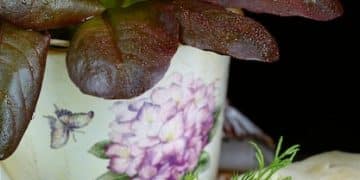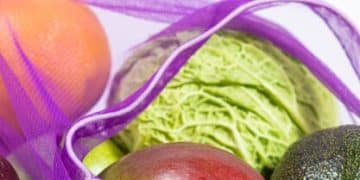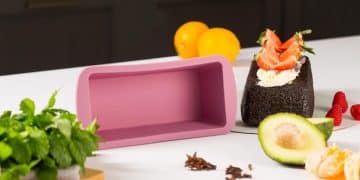Reduce Food Waste: A Step-by-Step Guide to Home Composting
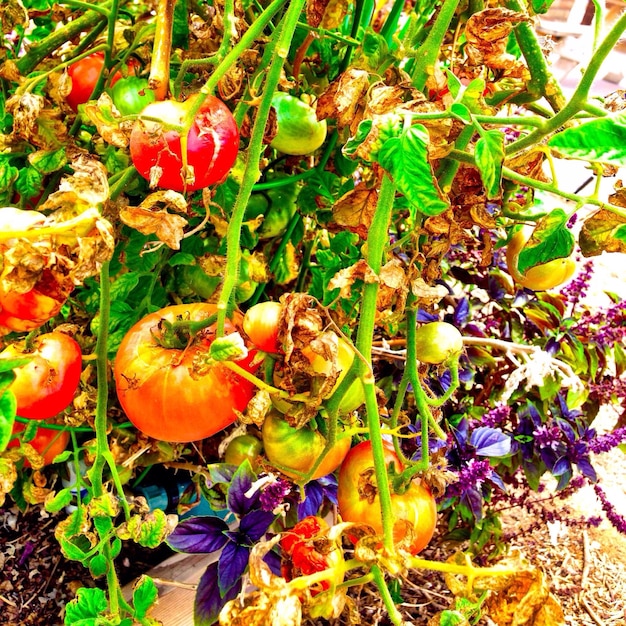
Reduce Food Waste by 30%: A Step-by-Step Guide to Composting at Home offers a practical approach to diminishing household food surplus by transforming kitchen scraps and yard waste into nutrient-rich compost, therefore benefiting both your garden and the environment.
Are you looking for a simple yet impactful way to reduce your environmental footprint? Reduce Food Waste by 30%: A Step-by-Step Guide to Composting at Home illustrates not only provides a comprehensive roadmap for beginners and seasoned gardeners alike, turning food waste into valuable soil amendment, but it also empowers individuals to take actionable steps towards a greener lifestyle.
Why Compost? The Environmental and Personal Benefits
Composting isn’t just about throwing away less garbage; it’s a powerful way to address major environmental challenges and improve your own well-being. From reducing landfill waste to enriching your garden soil, the benefits are multifold.
Reduce Landfill Waste
When organic waste ends up in landfills, it decomposes anaerobically (without oxygen) and produces methane, a potent greenhouse gas far more harmful than carbon dioxide. By composting, you divert this organic material from landfills and reduce methane emissions significantly.
Enrich Your Garden Soil
Compost is a natural soil amendment that improves soil structure, water retention, and nutrient availability. It acts as a slow-release fertilizer, providing essential nutrients to your plants over time. Using compost in your garden reduces the need for synthetic fertilizers and enhances plant growth.
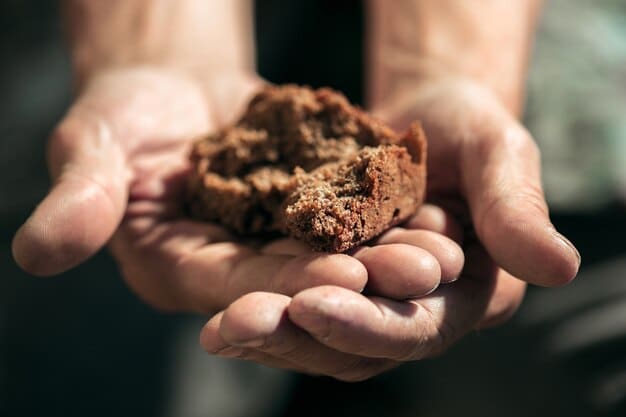
Here’s a look at the advantages of composting:
- Environmental Impact: Composting lowers the pressure in landfills and reduces the emission of dangerous greenhouse gases.
- Nutrient Recycling: Turns waste into valuable resources.
- Improve soil health: Natural soil amendments are made from compost.
Ultimately, composting is a simple and effective way to combat food waste and boost the growth of plants. It provides several benefits to people and the environment when embraced.
Setting Up Your Compost System: Choosing the Right Method
Before you start tossing your apple cores into a pile, it’s essential to determine what type of composting system fits your lifestyle and available space. There are several options to choose from, each with its own set of advantages and considerations.
Outdoor Composting Bins
Outdoor composting bins are a popular choice for those with yards. These bins can range from simple homemade structures to commercially available tumblers and multi-bin systems. They’re ideal for processing a large volume of organic waste, including yard trimmings and kitchen scraps.
Indoor Composting: Vermicomposting
Vermicomposting, or worm composting, is an excellent option for those without outdoor space or who prefer an indoor system. It involves using worms, such as red wigglers, to break down food scraps. Worm composting is odorless and relatively low-maintenance, making it suitable for apartments and small homes.
Consider the following components when choosing a composting system:
- Space: Indoor systems are perfect for tight places while outdoor bins require more area.
- Volume: Consider the amount of trash you need to compost frequently.
- Maintenance: Some systems involve more work to maintain than others.
It is essential to weigh your own needs and resources when selecting a system so that you are sure it will meet your objectives and match your way of life.
What to Compost: A Guide to Accepted Materials
Understanding what can and cannot be composted is crucial for creating healthy compost and avoiding unpleasant odors or pest issues. While many organic materials are suitable for composting, some items should be avoided.
Greens and Browns: Finding the Right Balance
Composting requires a balance of “greens” and “browns.” Greens are nitrogen-rich materials, such as food scraps, coffee grounds, and grass clippings. Browns are carbon-rich materials, such as dry leaves, paper, and cardboard. A good ratio of greens to browns is approximately 1:1 or 1:2.
Materials to Avoid
Certain materials should not be composted as they can attract pests, cause odor problems, or introduce harmful pathogens to your compost pile. These include meat, dairy, oily foods, pet waste, and diseased plants.
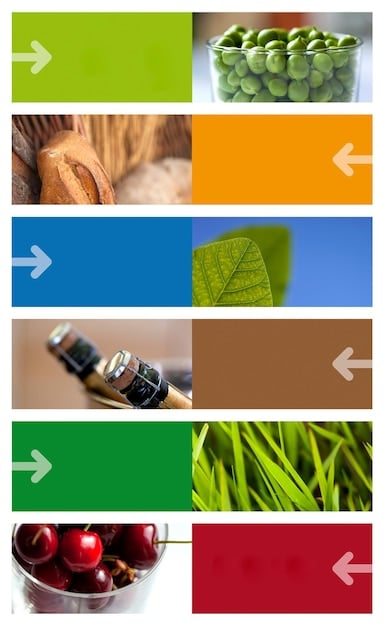
Here’s a quick guide:
- Accepted Materials: Vegetable and fruit scraps, yard trimmings, coffee grounds.
- Materials to Avoid: Dairy, meat, and oily substances are not advised.
- Think about balance: To enhance breakdown avoid odors, combine greens(nitrogen-related) and browns (carbon-containing).
You may make the best fertilizer by knowing exactly what to compost and what to avoid that is safe and ecologically friendly.
The Composting Process: Step-by-Step Instructions
Once you’ve chosen your composting method and gathered your materials, it’s time to start composting. The composting process involves several key steps, including layering materials, maintaining moisture, and turning the pile.
Layering Materials
Start by layering greens and browns in your compost bin or pile. Begin with a layer of browns, such as dry leaves or shredded paper, followed by a layer of greens, such as food scraps or grass clippings. Alternate layers as you add more materials.
Maintaining Moisture
Maintaining the right moisture level is crucial for successful composting. The compost pile should be moist but not soggy, like a wrung-out sponge. If the pile is too dry, add water. If it’s too wet, add more browns to absorb excess moisture.
Turning the Pile
Turning the compost pile regularly helps to aerate the materials and speed up decomposition. Use a pitchfork or shovel to turn the pile every few days or once a week, depending on the size and type of composting system.
Follow these easy steps to get successful results:
- Layering Techniques: You ought to alternate between the green pieces and the brown layers.
- The Maintenance of Moisture: It must constantly be kept moist.
- Rotating: Regular turning improves the decomposition process.
By carefully implementing these methods, you’ll see that you are on your way to changing your rubbish into garden soil.
Troubleshooting Common Composting Issues
Even with careful planning and execution, composting can sometimes present challenges. Common composting problems include unpleasant odors, slow decomposition, and pest infestations. Fortunately, most of these issues can be easily resolved with a few simple adjustments.
Odors
If your compost pile smells bad, it’s likely due to an imbalance of greens and browns or poor aeration. Add more browns to absorb excess moisture and turn the pile to improve airflow. Avoid composting meat, dairy, and oily foods, as these can cause strong odors.
Slow Decomposition
Slow decomposition can be caused by a lack of moisture, insufficient aeration, or a lack of nitrogen. Make sure the compost pile is adequately moist, turn it regularly, and add more green materials to increase nitrogen content.
There can be obstacles in every compost but here are some solutions:
- Eliminating scent: It may be a sign that there may be little air flow or that the compost is wet.
- Decomposition: Increase air flow and add extra nitrogen-rich materials.
- Prevention from pests: Maintain proper composting conditions to keep away bugs.
Getting it right the first time may be impossible, but with practice, you will soon figure out how to get it right.
Using Your Compost: Applications and Benefits
Once your compost has fully decomposed and transformed into a dark, crumbly material, it’s ready to be used in your garden. Compost can be used in a variety of ways, including as a soil amendment, mulch, or potting mix.
Soil Amendment
Incorporate compost into your garden soil to improve its structure, water retention, and nutrient availability. Mix compost with existing soil when planting new plants or use it as a top dressing for established plants.
Mulch
Spread a layer of compost around your plants to suppress weeds, conserve moisture, and regulate soil temperature. Compost also acts as a slow-release fertilizer, providing essential nutrients to your plants over time.
Now that you’ve created it, what can you accomplish using compost?
- Modifying the soil: Enhancing fertility of ground.
- Mulching: Using water to preserve moisture and weeds.
- Making potting mixes: Creating mixes that are rich in nutrients for container plants.
With this adaptable, soil-enriching item, you will be able to assist your garden in flourishing.
Advanced Composting Techniques: Taking It to the Next Level
For those who are enthusiastic about composting and would like to enhance their composting knowledge, there are a plethora of sophisticated methods to discover. These tactics can enhance the effectiveness of your composting initiatives and yield even better outcomes.
Bokashi Composting
Bokashi composting is an anaerobic composting method that involves fermenting food waste with beneficial microorganisms. It’s particularly useful for composting meat, dairy, and other items that are typically avoided in traditional composting. Bokashi composting produces a nutrient-rich liquid fertilizer and a pre-compost material that can be added to a regular compost pile or buried directly in the garden.
Compost Tea
Compost tea is a liquid extract made by steeping compost in water. It’s a beneficial fertilizer that can be applied to plant leaves or watered into the soil. It supplies plants with disease-suppressing bacteria and vital nutrients.
There are constantly techniques developed to improve compositing, a few of them are:
- Bokashi Composting: Meat and dairy products can be composted using fermentation.
- Compost Tea: Use for a nutritious plant booster
- Constructing various composting systems: to boost composting effectiveness
You can achieve more compost and help your garden with the best methods by studying this advanced composting.
“`html
| Key Point | Brief Description |
|---|---|
| ♻️ Composting Benefits | Reduces landfill waste and enriches garden soil, supporting a sustainable lifestyle. |
| 🌱 Greens & Browns | Balancing these in your compost pile is essential for effective decomposition. |
| 💧 Moisture Control | Maintain moisture like a wrung-out sponge for optimal composting conditions. |
| 🐛 Vermicomposting | Ideal for indoor composting using worms, perfect for small spaces and apartments. |
Frequently Asked Questions
▼
Composting at home reduces landfill waste, decreases methane emissions, enriches garden soil, and lessens the necessity for artificial fertilizers. It’s an eco-friendly way to recycle organic household waste.
▼
Avoid composting meat, dairy products, oily foods, and diseased plants, since these can attract pests, bring about disagreeable odors, or introduce risky germs to your compost pile.
▼
You should turn your compost pile every few days to weekly. It depends on the size and the type of composting one does. It facilitates it by boosting airflow and speeding up the decomposition process for the pile.
▼
Odors usually appear due to a balance of greens and browns and also little aeration. To fix this, add more browns that suck up excess moisture and turn to increase the flow of air.
▼
Compost can function being a soil amendment for improving the texture and fertility of the same. Also it can serve as mulch to assist one in moisture retention and weed protection, plus can be utilized as ingredient for the fertilizer.
Conclusion
By following this step-by-step guide, you can significantly reduce food waste by 30% and create valuable compost for your garden. Begin composting today and enjoy the numerous ecological advantages, starting with a beautiful garden of yours.
Green Living Tips

